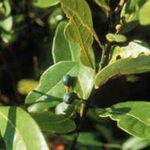Want plants that you can divide and replant? Want to find good native plants where you can separate and fill your garden with what you have instead of spending even more money on new plants? These are the native flowers for you.
Rudbeckia triloba L. (Browneyed Susan)
Kingdom Plantae – Plants
Subkingdom Tracheobionta – Vascular plants
Superdivision Spermatophyta – Seed plants
Division Magnoliophyta – Flowering plants
Class Magnoliopsida – Dicotyledons
Subclass Asteridae –
Order Asterales –
Family Asteraceae – Aster family
Genus Rudbeckia L. – coneflower
Species Rudbeckia triloba L. – browneyed Susan
This flower gets up to 3-4 feet tall and needs a spacing of 2-3 feet. It likes sun to partial shade. Its gold or yellow flowers come in late summer and it is a self-sow plant. You need to deadhead if you don’t want it to reseed. There is good bloom coverage and you can pair it with a nice ornamental grass. To propagate you can either divide the rootball or just let it self-sow.
Phlox paniculata L. (Fall Phlox)
Kingdom Plantae – Plants
Subkingdom Tracheobionta – Vascular plants
Superdivision Spermatophyta – Seed plants
Division Magnoliophyta – Flowering plants
Class Magnoliopsida – Dicotyledons
Subclass Asteridae –
Order Solanales –
Family Polemoniaceae – Phlox family
Genus Phlox L. – phlox
Species Phlox paniculata L. – fall phlox
A Phlox that will get up to 4 feet tall and have a 3 foot spread. It prefers full sun, moist soil, and good drainage. It will bloom from mid summer to fall; pinkish purple hues. It is fragrant and will attract butterflies and birds. Divide every 4 years for optimum growth. Expect a longer than average bloom time compared to other Phlox. To propagate you can divide the rootball.
Phlox stolonifera Sims (Creeping Phlox)
Kingdom Plantae – Plants
Subkingdom Tracheobionta – Vascular plants
Superdivision Spermatophyta – Seed plants
Division Magnoliophyta – Flowering plants
Class Magnoliopsida – Dicotyledons
Subclass Asteridae –
Order Solanales –
Family Polemoniaceae – Phlox family
Genus Phlox L. – phlox
Species Phlox stolonifera Sims – creeping phlox
This perennial only gets to 6 inches tall with an 18 inch spread. This can be a great ground cover by not pulling up the fine hair like roots. Its blooms range from violet to lavender in mid spring. It’s an evergreen and drought tolerant. You may propagate it by stem cuttings.
Physostegia virginiana (L.) Benth. (Obedient Plant)
Kingdom Plantae – Plants
Subkingdom Tracheobionta – Vascular plants
Superdivision Spermatophyta – Seed plants
Division Magnoliophyta – Flowering plants
Class Magnoliopsida – Dicotyledons
Subclass Asteridae –
Order Lamiales –
Family Lamiaceae – Mint family
Genus Physostegia Benth. – lionsheart
Species Physostegia virginiana (L.) Benth. – obedient plant
This is an easy to grow, deer resistant plant and grows up to 2-4 feet. It is fine in poor soils. It has lavender or pink flower spikes from late summer to fall. The blooms open from bottom to top and are very good in wildflower or water gardens. For best results, plant in shade, with slightly acidic soil, and give plenty of water. Keep a watch on this one though, although it may be called Obedient Plant, it certainly can be disobedient in staying within its bounds. A close eye needs to be kept on it to keep it from becoming invasive. To propagate this you can divide the rootball.
Phlox divaricata L. ssp. laphamii (Wood) Wherry (Lampham’s Phlox)
Kingdom Plantae – Plants
Subkingdom Tracheobionta – Vascular plants
Superdivision Spermatophyta – Seed plants
Division Magnoliophyta – Flowering plants
Class Magnoliopsida – Dicotyledons
Subclass Asteridae –
Order Solanales –
Family Polemoniaceae – Phlox family
Genus Phlox L. – phlox
Species Phlox divaricata L. – wild blue phlox
Variety Phlox divaricata L. ssp. laphamii (Wood) Wherry- Lampham’s Phlox
This flower gets up to 12-18 inches high and needs a spread zone of 12-15 inches. It prefers sun to partial shade and has average water needs. Its fragrant blue, violet, or lavender flowers com in mid spring to early summer. It propagate this plant you can divide the rhizomes or through herbaceous stem cuttings.
Mertensia virginica (L.) Pers. ex Link (Virginia Bluebells)
Kingdom Plantae – Plants
Subkingdom Tracheobionta – Vascular plants
Superdivision Spermatophyta – Seed plants
Division Magnoliophyta – Flowering plants
Class Magnoliopsida – Dicotyledons
Subclass Asteridae –
Order Lamiales –
Family Boraginaceae – Borage family
Genus Mertensia Roth – bluebells
Species Mertensia virginica (L.) Pers. ex Link – Virginia bluebells
This lovely plant will get up to 2 feet tall and have blue trumpet like flowers (pink in the bud). It will bloom in April. It prefers moist humus rich soil and partial shade. You can divide in the spring to propagate.
Mikania scandens (L.) Willd. (Climbing Hempvine)
Kingdom Plantae – Plants
Subkingdom Tracheobionta – Vascular plants
Superdivision Spermatophyta – Seed plants
Division Magnoliophyta – Flowering plants
Class Magnoliopsida – Dicotyledons
Subclass Asteridae –
Order Asterales –
Family Asteraceae – Aster family
Genus Mikania Willd. – hempvine
Species Mikania scandens (L.) Willd. – climbing hempvine
This vine grows up to 15 feet long. It has smoky pale pink or white flowers in late summer to mid fall. It prefers full sun. It has herbaceous foliage and can be invasive if not watched. Divide the root ball to propagate.
Lonicera sempervirens L. (Coral Honeysuckle, Trumpet Honeysuckle)
Kingdom Plantae – Plants
Subkingdom Tracheobionta – Vascular plants
Superdivision Spermatophyta – Seed plants
Division Magnoliophyta – Flowering plants
Class Magnoliopsida – Dicotyledons
Subclass Asteridae –
Order Dipsacales –
Family Caprifoliaceae – Honeysuckle family
Genus Lonicera L. – honeysuckle
Species Lonicera sempervirens L. – trumpet honeysuckle
This vine is great for wildlife gardens; growing up to 15 feet in length. It likes sun or partial shade and has red or yellow trumpet like flowers. Bloom season is April to August. This is very fragrant; a favorite of birds, bees, and butterflies. It has evergreen foliage. Propagate this from stem cuttings. BEWARE: Some parts of this are poisonous.
Lilium catesbaei Walt. (Pine Lily)
Kingdom Plantae – Plants
Subkingdom Tracheobionta – Vascular plants
Superdivision Spermatophyta – Seed plants
Division Magnoliophyta – Flowering plants
Class Liliopsida – Monocotyledons
Subclass Liliidae –
Order Liliales –
Family Liliaceae – Lily family
Genus Lilium L. – lily
Species Lilium catesbaei Walt. – pine lily
A great pick for a water garden, this will reach up to 2 feet tall. It loves sun or partial shade and moist soil. It has red blooms from late fall to winter. You can divide to propagate.
Hymenocallis caroliniana (L.) Herbert (Carolina Spiderlily)
Kingdom Plantae – Plants
Subkingdom Tracheobionta – Vascular plants
Superdivision Spermatophyta – Seed plants
Division Magnoliophyta – Flowering plants
Class Liliopsida – Monocotyledons
Subclass Liliidae –
Order Liliales –
Family Liliaceae – Lily family
Genus Hymenocallis Salisb. – spiderlily
Species Hymenocallis caroliniana (L.) Herbert – Carolina spiderlily
This member of the amaryllis family will get up to 2 feet tall. It will bloom 3-9 white flowers mid to late summer. It prefers full sun or partial shade. It has evergreen foliage and fragrant flowers. You can propagate these by dividing the tubers.
Helianthus angustifolius L. (Swamp Sunflower)
Kingdom Plantae – Plants
Subkingdom Tracheobionta – Vascular plants
Superdivision Spermatophyta – Seed plants
Division Magnoliophyta – Flowering plants
Class Magnoliopsida – Dicotyledons
Subclass Asteridae –
Order Asterales –
Family Asteraceae – Aster family
Genus Helianthus L. – sunflower
Species Helianthus angustifolius L. – swamp sunflower
This flower gets up to 6-8 feet tall and needs a spacing zone of 9-12 inches. It loves full sun and has high moisture needs. Butterflies and birds love it, birds mainly for the seeds. It has bright yellow flowers in mid fall. You can plant this in just about any soil so long as you don’t let it dry out. It is deer resistant. Propagate this by dividing the root ball. Cut back after bloom to really insure a healthy growth pattern the next year.
Helianthus tuberosus L. (Jerusalem artichoke)
Kingdom Plantae – Plants
Subkingdom Tracheobionta – Vascular plants
Superdivision Spermatophyta – Seed plants
Division Magnoliophyta – Flowering plants
Class Magnoliopsida – Dicotyledons
Subclass Asteridae –
Order Asterales –
Family Asteraceae – Aster family
Genus Helianthus L. – sunflower
Species Helianthus tuberosus L. – Jerusalem artichoke
This plant gets up to 8-10 feet tall and has a spacing need of 2-3 feet. It prefers full sun and neutral pH soil, and is a rapid grower. It will have gold or yellow flowers in late summer to early fall. You can propagate this by dividing the rootball. The rhizomes can be eaten like a potato. It is a good plant for privacy blinds or borders.
Hibiscus coccineus Walt. (Scarlet Rosemallow)
Kingdom Plantae – Plants
Subkingdom Tracheobionta – Vascular plants
Superdivision Spermatophyta – Seed plants
Division Magnoliophyta – Flowering plants
Class Magnoliopsida – Dicotyledons
Subclass Dilleniidae –
Order Malvales –
Family Malvaceae – Mallow family
Genus Hibiscus L. – rosemallow
Species Hibiscus coccineus Walt. – scarlet rosemallow
These 5 petal scarlet blooms reach up to 7 feet tall on erect stems. The blooms are 6-8 inch across and will last only one day. There will be new flowers all throughout summer and fall. You can divide the root to propagate. This plant will resemble marijuana before it blooms. Remember that it will die out in winter; but expect it to resprout each spring.
Hibiscus moscheutos L. ssp. moscheutos (Crimsoneyed Rosemallow)
Kingdom Plantae – Plants
Subkingdom Tracheobionta – Vascular plants
Superdivision Spermatophyta – Seed plants
Division Magnoliophyta – Flowering plants
Class Magnoliopsida – Dicotyledons
Subclass Dilleniidae –
Order Malvales –
Family Malvaceae – Mallow family
Genus Hibiscus L. – rosemallow
Species Hibiscus moscheutos L. – crimsoneyed rosemallow
Subspecies Hibiscus moscheutos L. ssp. moscheutos – crimsoneyed rosemallow
This cute flower gets up to 4-6 feet tall with a spacing zone of 2-3 feet. It prefers full sun and mildly acidic well drained soil. Its red, white, or pink flowers come in mid summer to early fall. It has maple tree like leaves and it is very easy to grow in most garden settings. It has average moisture requirements, and you can expect it to die back in winter. Propagation from stem cuttings or you can divide the rootball.
Helenium autumnale L. (Common Sneezeweed)
Kingdom Plantae – Plants
Subkingdom Tracheobionta – Vascular plants
Superdivision Spermatophyta – Seed plants
Division Magnoliophyta – Flowering plants
Class Magnoliopsida – Dicotyledons
Subclass Asteridae –
Order Asterales –
Family Asteraceae – Aster family
Genus Helenium L. – sneezeweed
Species Helenium autumnale L. – common sneezeweedThis upright hardy reaches a height of 4-6 feet and a spread of 3-4 feet. It will bloom August to October in the red, yellow, and orange spectrum. It does best in full sun and moist soil. You can collect seed heads when the flowers fade to collect seed; or divide in spring or fall to propagate


